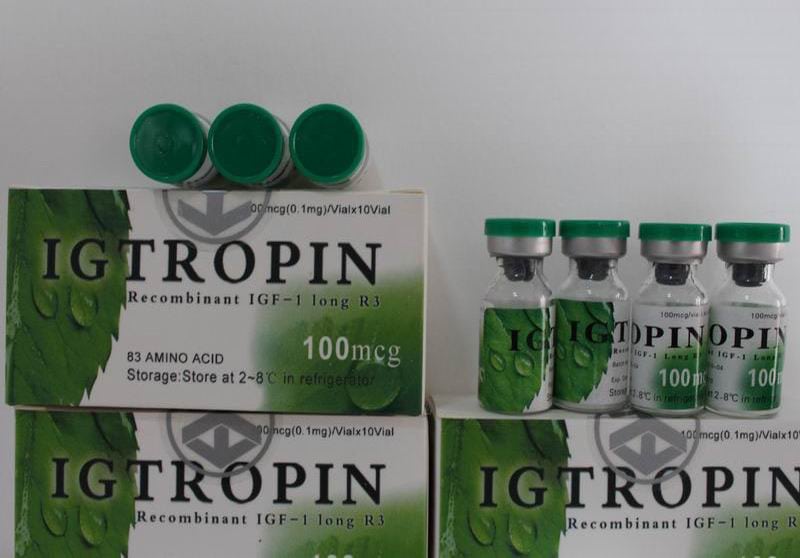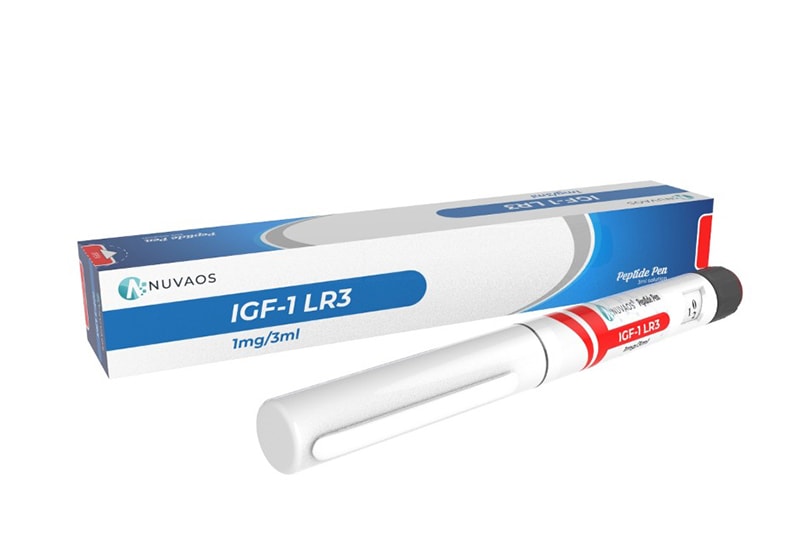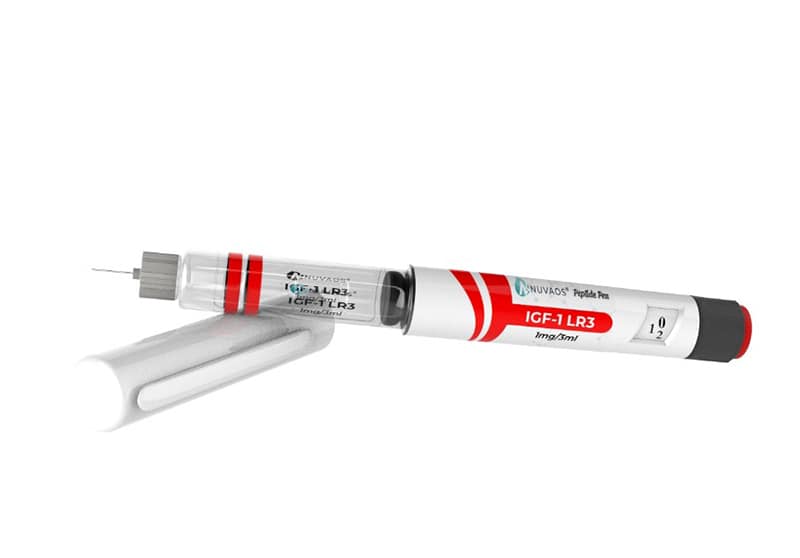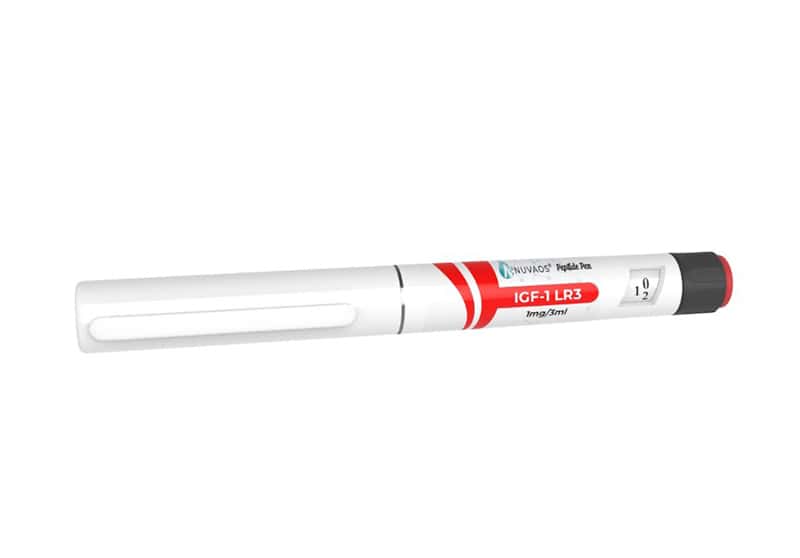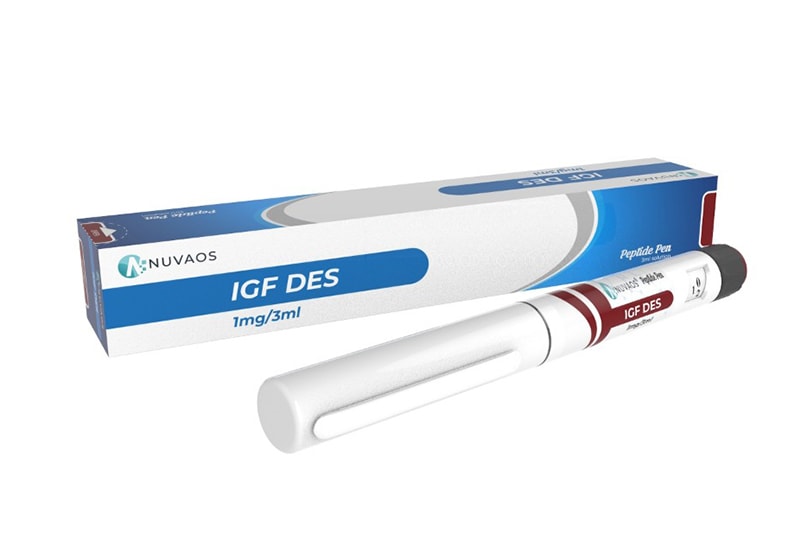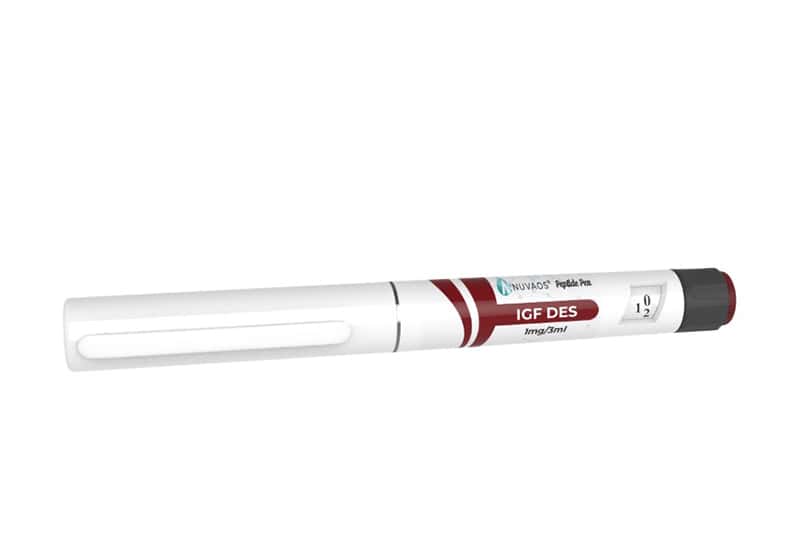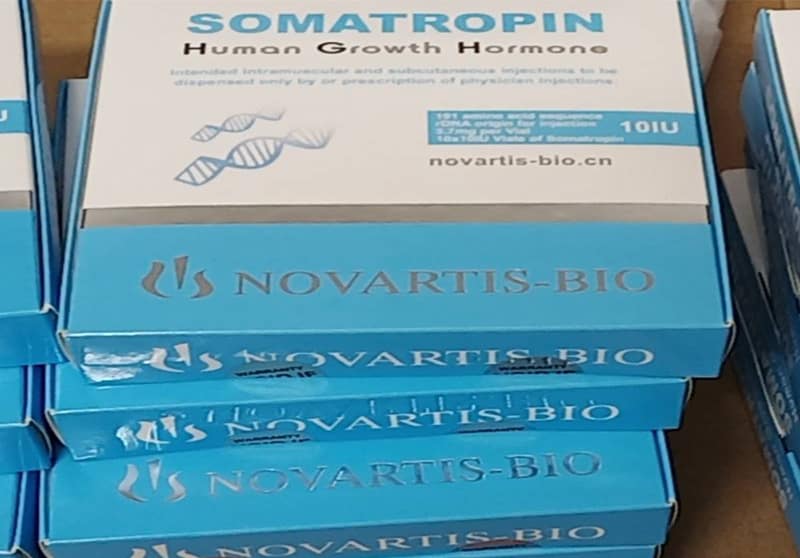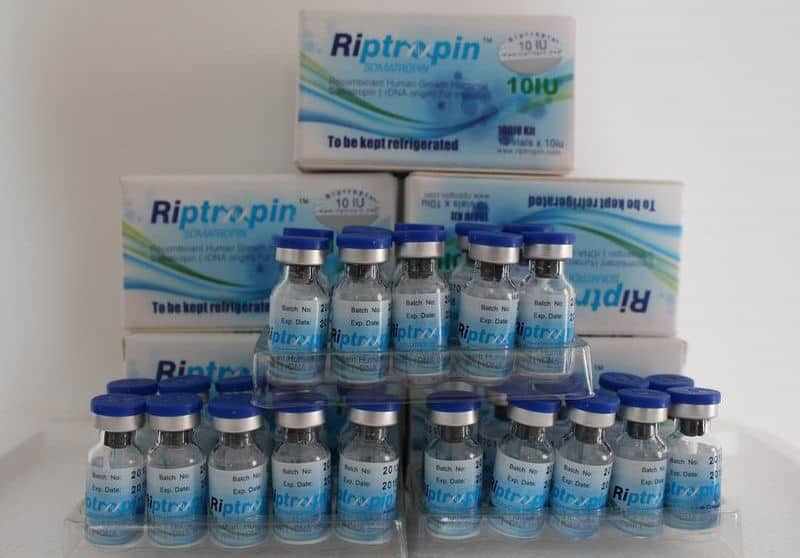Igtropin is a brand of synthetic insulin-like growth factor-1 (IGF-1) [1]. IGF-1 is produced by the liver [1] and is derived from the human growth hormone (HGH).As for IGF-1 Long R3 or IGF-1 LR3, this is another form of human insulin-like growth factor with some changes in amino acid compositions. It consists of 83 amino acids, where glutamine is replaced by arginine in the third position.
IGTROPIN IGF-1 LR3
- Manufactured by: Hyghgh Biopharm Co., Ltd.
- Country of origin: China
- Manufactured since: 2009 – Present
- Package :10iu/10vials/1kits
- Price: $1.5 – $3 per IU
- Minimum Order:1 kits
- Storage:2–8 ℃ in (room temperature)
- Delivery: 5-15 days
- Source: tophygetropin.com/shop/
IGF-1 LR3 is an analogue of IGF-1 that primarily affects carbohydrate metabolism. The active substance blocks the flow of glucose into the cells and helps our body burn adipose tissue for getting more energy. Thus, there is a noticeable decrease in the fat layer after a few weeks. Another interesting effect is hyperplasia (the number of muscle cells increases). IGF-1 LR3 stimulates the absorption of amino acids and the synthesis of proteins in muscles and other tissues.
IGF-1 supplements have been identified as building denser bones [3], lessening inflammation that is linked with a risk factor for heart disease [4], lessening aging-related inflammation [4], and reducing inflammation that is linked with muscle weakness [4]. Yet more research needs to be done on IGF-1, and no independent clinical research has been conducted on Igtropin. So it is best to consider these research-based benefits as possible benefits for Igtropin users.
Unlike many other HGH brands, Igtropin does not seem to have a credible online presence. It also lacks independent reviews [5], and its manufacturer is unknown. So it is difficult to be sure if Igtropin is real or fake. While there could be a legitimate company that manufactures and markets Igtropin, the lack of accountability increases the risks for users.
Igtropin benefit & effect
What does IGF-1 do to the body? Here are some of the positive things that it does for us (more on these below):
- Helps build muscle mass and increase strength
- Helps prevent muscle wasting
- May enhance physical performance, support muscle recovery and help with healing from injuries
- Can help with regulation of levels of body fat (adipose tissue)
- Builds strength in response to strength-training
- Helps build bones and protect against bone loss
- Can help regulate blood sugar levels and decrease diabetes risk factors
- Supports growth and development in children
- May help protect cognitive health and fight against neurological diseases or loss of brain cells by acting as a neurotrophic factor
- Supports vascular endothelial growth
- May help prevent skin thinning
- May help prevent hypoglycemia (low sugar levels)
- Can help support kidney function and blood filtration
- May affect genes in a way that promotes healthy aging (when in balance with other growth factors)
Here’s more about the benefits associated with this hormone:
- Helps Build Muscle and Fights Muscle Wasting
Many studies show that IGF-1 stimulates skeletal muscle hypertrophy and a switch to glycolytic metabolism, allowing you to build strength.
It activates several channels that help with the expression of other growth factors. IGF-1 can also help decrease age-related muscle wasting (also called sarcopenia or muscle atrophy) by preserving lean muscle mass.
Human growth hormone plays an important role during the period of puberty. HGH is responsible for natural muscle growth during puberty, as well as for a number of other functions, such as protein synthesis, RNA synthesis, transport of amino acids and glucose, etc. Nevertheless, there are different forms of HGH, such as IGF-1 and IGF-1 LR3, which have different functions and benefits.
IGF-1 (insulin-like growth factor 1) is a protein with an insulin-like structure. The main function of IGF-1 is to stimulate the growth of the body by regulating cell growth and cell death. Synthetic IGF-1 can be used as an alternative to human growth hormone produced by the pituitary gland. HGH secretion declines with age, but it can be stimulated by insulin-like growth factor 1, since IGF-1 has the same effect as HGH.
According to recent studies, IGF-1 LR3 is a more potent analogue than IGF-1 (the biological activity is higher). In general, IGF-1 LR3 has a different functional activity in various types of tissues. For example, it makes the muscles more sensitive to insulin, and at the same time leads to a decrease in fat accumulation in muscle tissue. That is, when using IGF-1 Long R3, you will gain pure muscle tissue.
Both types of substances will help you gain muscle mass. Bodybuilders or people who want to make their body stronger use both HGH and IGF-1 LR3 to build quality mass.
- Helps Prevent Cognitive Decline in Older Adults
Higher circulating concentrations of IGF-1 in older adults may help prevent neuronal loss and age-related decline in cognitive functions.
Experts now think that IGF-1 may help boost executive function (a set of mental skills that helps you complete everyday tasks) and verbal memory.
In certain animal studies, it’s been found that IGF-1 may help protect against Parkinson’s disease and induce clearance of brain amyloid-betas, which at high levels are associated with Alzheimer’s disease.
- Supports Metabolic Health and Fights Type 2 Diabetes
IGF-1 and insulin work together to keep blood sugar levels stable. Depending on what types of foods you eat, they determine what your body uses for energy (fat or glucose) and where excess energy is stored.
Certain studies have found that when type 2 diabetic patients are treated with IGF-1, their blood sugar levels decrease, insulin sensitivity improves and blood lipids also improve.
IGF-1 may also be beneficial when you’re fasting or following the ketogenic diet because it can help you burn fat for fuel instead of glucose.
- Helps Build Bones and Preserve Bone Health
IGF-1 has been shown to play a role in bone formation and is a key growth factor that regulates both anabolic and catabolic pathways in skeletal muscle.
Researchers believe that it stimulates bone formation by having a direct effect on osteoblasts. It increases skeletal muscle protein synthesis and can help prevent bone loss in older age (especially in postmenopausal women who are at the highest risk of bone-related disorders like osteoporosis).
Growth hormone and IGF-1 are also fundamental in skeletal growth during puberty. One study that focused on bone mineral density (BMD) and bone mineral content (BMC) in 59 African American and 59 white girls, aged 7–10 years, found that higher plasma IGF-1 concentrations were correlated with better BMD/BMC in younger age too.
- Facilitates Growth and Development
Studies have found that higher concentrations of IGF-1 in fetuses result in lager fetal size. In animal studies, IGF-1 deficiency has been associated with impaired neurologic development, suggesting that this hormone has specific roles in axonal growth and myelination. Deficiency in IGF-1 has also been linked to neonatal mortality.
Because it is a growth promoter, it makes sense that studies show blood levels of IGF-1 progressively increase during childhood and peak at the time of puberty.
After puberty, when rapid growth is completed, levels of IGF-1 decrease. Defects in the gene that helps stimulate production of IGF-1 causes insulin-like growth factor 1 deficiency, which is associated with stunted growth and development.
Why choice Igtropin (Igf-1 LR3)for bodybuilding ?
IGF-1 LR3 is ideal for those who want to build lean muscle mass faster. This peptide acts incredibly fast, so you will see the result immediately.
IGF-1 LR3 has a high anabolic index. The main effect is expressed in muscle hyperplasia. As studies have shown, this drug works perfectly even in veteran athletes.
IGF-1 Long R3 blocks glucose in the body and promotes fat-burning effect during training. The effect is similar to the effect of growth hormone, although you will get faster and better results with IGF-1 LR3.
Igtropin (Igf-1 LR3) side effect and Some Clinical phenomenon
Possible side effects of IGF-1 can include:
joint problems
liver problems
overgrowth of some body tissues
heart damage
dangerous changes in blood sugar levels
Anyone with prediabetes or diabetes should avoid these products due to how they impact blood glucose, which can be seriously problematic and lead to issues like fainting.
While IGF-1 does have some important roles, on the other hand it has some negative effects when levels rise too high. For example, it may promote cancer development and lead to decreased life span (according to animal studies).
For some people, when they hear the word IGF-1, the first thing that comes to mind is performance-enhancing drugs. It’s important to point out that supplementing with IGF-1 for boosting performance is not recommended and not necessarily safe. This has been associated with side effects including:
Impaired glucose metabolism and hypoglycemia
Retinal edema
Fatigue
Changes in sexual function
Severe muscle pain
Here’s more about potential side effects and dangers associated with insulin like growth factor 1:
- May Contribute to Cancer Development
IGF-1 is what some call “a growth-promoter” because it has been shown to promote the growth of cancer cells. This is one reason why research suggests that older adults who have lower IGF-1 levels also have a lower risk of developing certain types of cancer, including breast, ovarian, prostate, colorectal and lung cancers.
Some studies have found an especially strong association between circulating IGF-1 concentrations and the risk of breast cancer in premenopausal but not postmenopausal women.
It’s still not entirely clear how IGF-1 may contribute to cancer. Some believe that IGF-1 might cause increased cell transformation, cell migration, metastasis and growth of tumors. It seems that IGF-1 doesn’t cause cancer but can allow it to progress and spread more quickly.
Overall there’s still more to learn about how IGF-1 can affect cancer risk, but for now it’s not considered safe to supplement with IGF-1 without being told to so by a doctor. It’s considered an illegal supplement and banned in professional sports, which should be enough to make you think twice before taking it.
- May Decrease Life Span
In certain animal studies conducted on mice, worms and flies, decreased IGF-1 levels actually led to longer life span. Increasing growth hormone by significant amounts has been shown in some animal studies to reduce life span by up to 50%, while reducing levels has been shown to boost life span by up to 33%.
It’s still not entirely clear why this happens, and the topic remains controversial. Lower IGF-1 may promote a longer life in animals, but some experts believe that it may increase expression of genes associated with stress-resistance and help fight oxidative stress.
IGF-1 may help decrease inflammatory responses, suppresses oxidative stress and decreases atherosclerosis progression. Based on these findings, there’s still unknowns about how growth hormones impact longevity, inflammatory responses and chronic disease development.
How To Use The Igtropin (Igf-1 LR3)?
Proper Riptropin Dosage Levels to Follow:
I-2 IU per day is the recommended dosage of Igtropin. New users should begin with a lower dose of 0.5 IU each day that can be increased in increments of 0.5 IU each month. There are health risks associated with having a high amount of HGH for a long period [1], so Igtropin is not for long-term usage.
The best Consult your fitness coach or your doctor.Doctor and blood tests determine the dose for any other purpose
How to Mix Igtropin (Igf-1 LR3)?
before using Igtropin (Igf-1 LR3), follow these instructions:
- Add 1mL of sterile water to the Igtropin(Igf-1LR3) vial.
- Release the water slowly and strictly on the side of the glass vial.
- DON’T SHAKE the vial violently as this will disrupt the solution.
- Continue to swirl until all the powder dissolves to achieve a clear solution.
Injection Sites :Where To Injection The Igtropin (Igf-1 LR3) ?
Igtropin (Igf-1 LR3) should always be injected subcutaneously, i.e., just below the skin and into the fatty tissue. The best sites are the stomach, deltoid, and thigh. Simply pinch along the skin and inject the hormone into the roll of fat. Alternate the sites to avoid bruising.
When to take Igtropin (Igf-1 LR3) for muscle building ?
Using Igtropin (Igf-1 LR3) for muscle building effects,It’s best to take half of your total daily dose after you wake up and the other half between a post-workout session and bedtime.
Or half dosage in the morning and half dosage in late afternoon) for bodybuilding purposes
Storage Of Riptropin Hgh
Before dilution, keep Igtropin (Igf-1 LR3) at 2-8 °C (room temperature) and avoid cold storage. Notice the period of validity printed on the label. After diluted with water: it must be used within 72 hours. It must be kept at 2-8°C (room temperature) and avoid refrigeration(too low)
If you use sterile water, you should use the vial within 3 days .For bacteriostatic water, you should use the vial within 10 days
Length of use for muscle building
Igtropin (Igf-1 LR3) results are not produce immediately. It might take 2 to 3 months before you can see results. Riptropin hgh cycle is after every 6 months.
Igtropin (Igf-1 LR3) Mixed reviews Summary
IGF-1 stands for “insulin-like growth factor 1.” It’s an anabolic peptide hormone that has a role in stimulating growth of cells and tissues, including muscles and bone.
This hormone possesses both beneficial effects, including fighting the effects of aging, and also some potentially harmful ones, too.
Benefits include building muscle mass, preventing muscle wasting, building bone mass, helping with growth, managing blood sugar levels and protecting against neurological disorders.
Dangers of this hormone include potentially increasing the risk for some cancers and reducing life span.
Exercise, fasting and other “beneficial stressors” like sauna therapy may increase IGF-1. Being sedentary, having high insulin levels, stress and sleep deprivation can lower it.
Igtropin(Igf-1 LR3)review
- Availability
- Reputability
- Purity
- Price
- Cost Effectiveness

